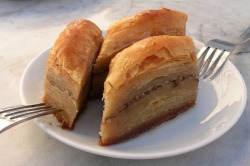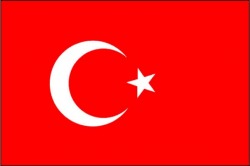The Indian Culture
Learned Culture
While posting about my culture on iEARN.org, I got an opportunity to learn about a culture I didn't quite know about - the Turkish culture. Several of my colleges on iEARN also learnt about this culture. Below is an overview of the Turkish Culture.
The Turkish Culture is a very unique and interesting culture. Each of it's aspects has something fascinating to learn:
Famous Monuments
The Dolmabahçe Palace is a historical landmark in Turkey, specifically located in Istanbul. The Dolmabahçe Palace was built between the years 1843-1856 under the order of the Sultan Abdulmecid. The Dolmabahçe Palace's square is 45.000 square metres. It cost five million Ottoman gold pound, which is the same as 38 tonnes gold. Furthermore, there are 4.5 tonnes crystal chandeliers which are very beautiful. Dolmabahçe Palace is HUGE, IMPRESSIVE and HISTORICAL!
Music
Turkish Art Music represents the Turkish culture. Famous singers or Turkish music include Zeki Muren and Bulenet Ersoy. The musical instruments used when playing Turkish music include lute, flute, fiddle, violin and zither.
Festivals
The festival name is 23rd April National Children's Festival. This festival, also known as "Atatürk " is dedicated it to Turkish children so importance of the festival. The activities during this festival are visiting museums, sightseeing, parade, dancing, singing, poems read etc. The benefits of the festival are peace, friendship, brotherhood, hospitality. This festival is celebrated by the Turkish children.
Fashion
This type of clothing is from The East Anatolia Region. Mature women wear this type of clothing. This clothing is;
Crown: Women wear to head. Crown's shape is like crescent. It's an ornamented and slim tulle.
Shoes: Women usually wear white colour and soleless shoes.
Shirt: Shirt is silk or satin. Women choose according to costume's colour.
Baggy trousers: Its cloth is satin or cotton. It is worn under the skirt.
Costume: Costume is linen and a single piece.
Belt: It is embroidered
The Turkish Culture is a very unique and interesting culture. Each of it's aspects has something fascinating to learn:
Famous Monuments
The Dolmabahçe Palace is a historical landmark in Turkey, specifically located in Istanbul. The Dolmabahçe Palace was built between the years 1843-1856 under the order of the Sultan Abdulmecid. The Dolmabahçe Palace's square is 45.000 square metres. It cost five million Ottoman gold pound, which is the same as 38 tonnes gold. Furthermore, there are 4.5 tonnes crystal chandeliers which are very beautiful. Dolmabahçe Palace is HUGE, IMPRESSIVE and HISTORICAL!
Music
Turkish Art Music represents the Turkish culture. Famous singers or Turkish music include Zeki Muren and Bulenet Ersoy. The musical instruments used when playing Turkish music include lute, flute, fiddle, violin and zither.
Festivals
The festival name is 23rd April National Children's Festival. This festival, also known as "Atatürk " is dedicated it to Turkish children so importance of the festival. The activities during this festival are visiting museums, sightseeing, parade, dancing, singing, poems read etc. The benefits of the festival are peace, friendship, brotherhood, hospitality. This festival is celebrated by the Turkish children.
Fashion
This type of clothing is from The East Anatolia Region. Mature women wear this type of clothing. This clothing is;
Crown: Women wear to head. Crown's shape is like crescent. It's an ornamented and slim tulle.
Shoes: Women usually wear white colour and soleless shoes.
Shirt: Shirt is silk or satin. Women choose according to costume's colour.
Baggy trousers: Its cloth is satin or cotton. It is worn under the skirt.
Costume: Costume is linen and a single piece.
Belt: It is embroidered
Food

Baklava - mmmh!!!
Turkish Coffee has played an important role in Turkish lifestyle and culture. Brought to Istanbul in 1555 by two Syrian traders, coffee became known as the "milk of chess players and thinkers". For both men and women, coffee has been at the centre of political and social interaction.
Turkish Coffee is served hot from a special coffee pot called "cezve". Tradition states that after the quest has consumed the coffee and the cup is turned upside down on the saucer and allowed to cool, hostess then performs a fortune reading from the coffee grounds remaining into cup. Nowadays coffee is usually served with less ceremony and more practical materials have replaced the carved wood and silver filigree.
Turkish coffee is usually served with Turkish Delight or the traditional 'Baklava' - a rich, sweet pastry made of layers of phyllo dough filled with chopped nuts and sweetened with syrup or honey.
Turkish Coffee is served hot from a special coffee pot called "cezve". Tradition states that after the quest has consumed the coffee and the cup is turned upside down on the saucer and allowed to cool, hostess then performs a fortune reading from the coffee grounds remaining into cup. Nowadays coffee is usually served with less ceremony and more practical materials have replaced the carved wood and silver filigree.
Turkish coffee is usually served with Turkish Delight or the traditional 'Baklava' - a rich, sweet pastry made of layers of phyllo dough filled with chopped nuts and sweetened with syrup or honey.

